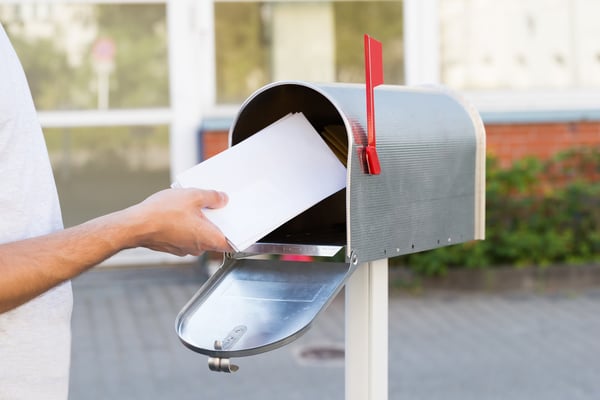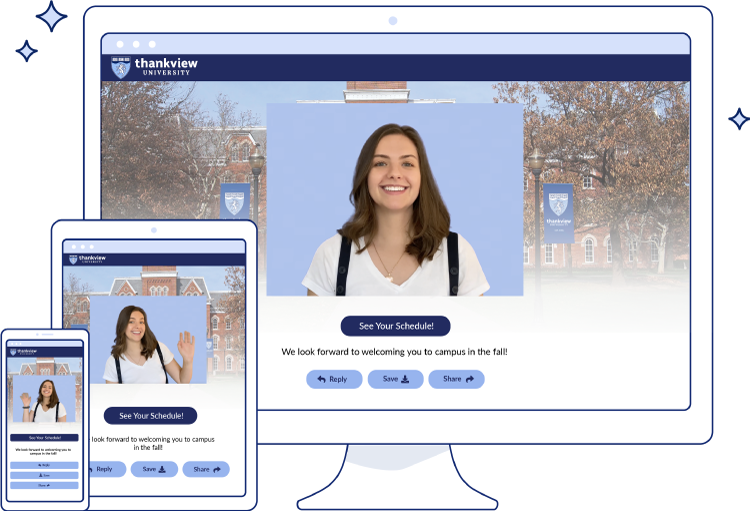How To Create a Fundraising Letter That Works for Your Nonprofit
Direct mail is not dead, nor is it a thing of the past. Nonprofit fundraising letters are still a key part of any healthy fundraising strategy. Reaching out to donors with a well-crafted appeal letter is one of the most effective ways to raise money for your cause. Now, with technology as another avenue of outreach, your fundraising letters can even take on the form of email, text message, and personalized video.
Equip yourself with fundraising letter basics, including how to send them and write a good one, so that you can convince more donors to give and more supporters to sing your praises.
The Basics of a Nonprofit Fundraising Letter
Think of a fundraising letter as a lifeline between your nonprofit organization’s programs and the target audience who cares about them. Whether handwritten or typed, sent by mail, or delivered via email, these letters are a way to do direct outreach to potential and current donors.
A good fundraising letter for donations clearly expresses your nonprofit’s financial needs and your capacity for impact if you receive the funds you’re seeking. Be sure to outline how donors can get involved—especially by donating money or in-kind gifts, but potentially even through volunteer time.
Fundraising letters that get results are those that capture the reader’s attention and pull at their heartstrings, likely loosening their purse strings. Potential donors want to see a proven track record and be able to visualize how they can play a role in your future success.
And then of course, you need to have a thank you letter and donation receipt on deck. Good stewardship now can result in recurring donations and lifelong supporters.
How To Send a Fundraising Letter

You have two main outlets to send your personal fundraising letters: snail mail or email. With traditional mail, you’re able to include return envelopes for checks, branded items (such as stickers, notebooks, or T-shirts), and printed booklets. With email, you can send links to videos, interactive tools, and fundraising pages.
Regardless of the medium you use, make your letters personal to build trust and a connection. Use the donor’s preferred name — Roger instead of Mr. Hannigan, Betty instead of Elizabeth, and so on.
For high-net-worth donors, include any notes that are specific to them. You can either write a blurb in the margins or include a personalized reference in the body of the letter. For example, if the donation request letter is raising money for wildlife and you know a potential donor loves sea otters, mention that in their letter.
Sign any hard copy nonprofit fundraising letters by hand. The appeal should come from a person of authority and influence. Generally, this is your Development Director, Executive Director, or a board member. It might also be a high-profile donor, making the ask to peers on your organization’s behalf. Choose whichever person is the most relevant to each set of donor recipients. You might even have different people sign the same letter, depending on who is on the receiving end.
Types of Fundraising Letters
The most common type of fundraising letter is a general appeal. This might be sent throughout the year, and almost definitely for your year-end giving campaign. Highlight your organization’s mission and goals, and show exactly how a donor can get involved.
Sponsorship letters, which are generally reserved for fundraising events, are a way to offset large expenses. They may also be used for capital campaigns. Think new wards or improved facilities. Keep in mind that a business sets money aside each year specifically to give back to the community (and receive that helpful tax break and positive press coverage). Sending a request is the first step in claiming that chunk of their budget.
In-kind donations require letters too. Often, you’re sending these requests to corporations or local businesses. You might also have a drive that individuals can donate items to, such as school supplies for low-income students or care packages for soldiers stationed overseas. Tell the donors what you need the items for and how you’ll use them.
For a fundraiser event, you’ll want your letter to feel like an exclusive invitation. Keep your messaging focused on your organization’s cause, framing the event as a way to accomplish and celebrate your goals together. Whenever possible, give your recipients plenty of notice so they can block off their calendars. Ideally, you’ll send an invitation one or two months before the event, then send reminders leading up to the big day. Don’t forget to include an RSVP date so that your planning committee has an accurate headcount.
You’ll also need outreach to direct people toward a virtual fundraising campaign. Online fundraising can include match days, giving days, crowdfunding, or peer-to-peer giving. Make your request shareable by including graphics and a blurb that supporters can post to their own social media profiles or forward to people they know. This is one of the best ways to attract new donors. Be sure to send people to a fundraising page that’s easy to access.
What To Say in Your Fundraising Appeal

Your fundraising letter templates should use your organization’s official letterhead, complete with your logo, address, and phone number, and they should include an appropriate salutation and closing. For a formal request sent by mail, you’ll also want to include the date, and likely the donor’s address.
When drafting your nonprofit fundraising letter’s content, outline a clear fundraising goal, and make your donor understand their role in helping you reach it. They should feel a personal connection to your overall mission. Cite a specific donation amount you’d like them to give and show that the donation is going toward something concrete. Especially if they’ve given in the past, use their giving amounts from last year or other historical data as a baseline for your current appeal.
Share stories of impact. You’re almost definitely addressing a difficult problem — child abuse, poverty, drug addiction, climate change. Present these dire situations to donors, then explain the solutions that you can offer together through your programming sponsored by their donations.
If you’ve had amazing results from past programs, now is the time to let those successes shine. Maybe you reduced recidivism in formerly incarcerated women by 40%, and one participant really stood out from the bunch as a success story. Use a moving testimonial from her. Maybe you increased job placement. Showcase a few newly employed people and the impact steady income has made on their lives. Explain the situation before your intervention, how you took action, and what’s changed since you got involved. Make the donor the hero of that journey.
A lot of donors need to know what’s in it for them. Yes, they’re happy to support your cause, but they’ll need to see a clear personal benefit. If you’re offering anything in return for their donation — from a more stable community to a spot on your website — make that clear.
After you’ve inspired your donor to give and prompted them with a suggested amount, don’t forget to tell them how to take action. End the letter with a really clear explanation of where and how to give. “Mail your check using the enclosed envelope.” “Click this link to donate.” Whatever your cause, the donor needs to know what to do next.
Start Sending
Letter appeals are part of your broader fundraising efforts. Make them count. Response rates vary, but when it comes to fundraising, you have to ask in order to receive.
A fundraising email can also be turned into a personalized video. Over 1,200 partners have used ThankView videos to engage their donors.
Prior to working with ThankView, Big Brothers and Big Sisters of Greater Kansas City used a mixture of handwritten cards, phone calls, and emails to reach their donors. They’ve since sent dozens of campaigns, including one for their largest fundraiser of the year, Bowl for Kids’ Sake. They sent ThankView videos to communicate bowling times with participants. For birthday campaigns, their ThankViews have had a 69.2% open andclick-throughh rate. If your letter-writing campaigns feel a bit stale, mix it up with ThankView.
